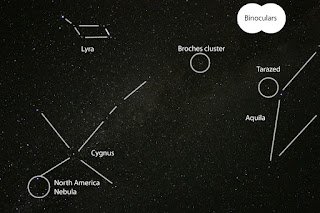First of all, there is now an Anza weather station whose data you can see at this link:
http://weathercurrents.com/anza/. This will help OCA members to know if weather may scuttle observing plans at their Anza observing site.
And now, images from the What's Up that Never Was:
Great sunsets have been making for stormy star gazing.
But in these storms, there have been some silver, or I should say, multicolored, linings. Here is a faint circumzenithal arc.
Suggesting the arc above wasn't an aberration, the next day, same time, same time of thunderstorm, produced a similar, but brighter arc:
The lesson: watch the weather, as it creates interesting phenomena.
And now the sky:
Scorpius sits low on the western horizon this time of year.
Sagittarius, to the left, is a little higher, so we can see it a bit longer in the evening.
Some objects to look at with binoculars or telescopes under a dark sky.
Directly over head this time of year is the summer triangle.
Binocular objects:
Telescopic objects:
A closeup of the coat hanger, a good object in binoculars:
Toward the west, but high in the sky, is Hercules. If you have a telescope, look for M13 in the circle.
Cassiopeia is in the northeast. You can use it to find the galaxy M31 (also called the Andromeda galaxy) and the double cluster. Both are good in binoculars and at low power in telescopes.
Positions of the moon.
















No comments:
Post a Comment